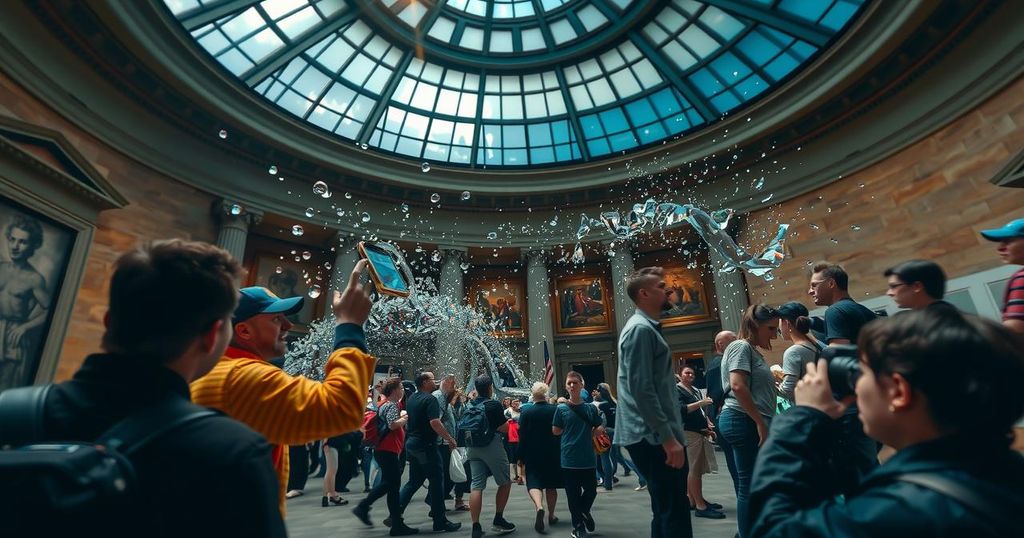National Gallery Implements Liquid Ban Amidst Rising Activist Attacks

Following several attacks by climate activists resulting in damage to artworks, London’s National Gallery has instituted a ban on liquids and enhanced security measures. This action is a response to ongoing protests that have included throwing substances at famous paintings to highlight climate issues and geopolitical conflicts. The National Museum Directors’ Council has called for an end to disruptive demonstrations, while activist groups defend their methods as necessary for raising awareness about urgent global crises.
In response to a series of climate activist protests that have involved throwing liquids at famous artworks, London’s National Gallery has implemented a ban on bringing any liquids into the facility. This decision stems from the museum’s desire to protect its invaluable collection and ensure the safety of its visitors and staff. An official statement from the museum emphasized the importance of safeguarding fragile artworks for future generations and acknowledged that mounting attacks have necessitated increased security measures. The National Gallery clarified that while liquids are banned for visitors, free tap water will still be accessible inside. The protests, which have ranged from splashing soup on masterpieces like the Mona Lisa and painting on Stonehenge, have escalated over the past two years, initially tied to climate change issues. Activist groups, including Just Stop Oil and the Last Generation, have recently broadened their focus to address geopolitical issues, such as calling for an end to government support for Israel during the Gaza conflict. Despite the artworks being mostly unharmed due to protective glass, some pieces have suffered damage. For example, the Just Stop Oil activists caused substantial damage to the frame of Van Gogh’s “Sunflowers,” amounting to approximately £10,000. Following a spate of recent attacks, the National Gallery has experienced significant distress among visitors and staff alike. The National Museum Directors’ Council issued an open letter expressing their concerns over these demonstrations, advocating for an end to such disruptive actions. The letter stated, “Whilst we respect the right for people to protest, and are often sympathetic to the cause, these attacks have to stop,” highlighting the negative impact on the reputation of UK museums and the emotional strain on their employees and visitors. In response, Just Stop Oil wrote their own letter defending their actions, pointing out, “These actions cause small amounts of damage and disruption to bring to attention the enormous damage and destruction that our government is supporting.” They continued to urge institutions to engage with current global crises, emphasizing the dire consequences of inaction. As tensions rise over both environmental and humanitarian issues, museums across the UK may now have to contend with stricter security measures and a heightened sense of vulnerability to further activist demonstrations.
The increasing frequency of activist protests targeting cultural institutions has raised concerns about the safety and stability of museum environments. Notably, the National Gallery in London has been the focus of multiple incidents where climate activists have thrown food substances on historically significant artworks. This trend coincides with heightened global awareness around issues like climate change and social justice, which activists now leverage as a platform for their messages by disrupting cultural spaces. These actions have sparked a complex debate on the balance between the right to protest and the preservation of cultural heritage.
In conclusion, the National Gallery’s decision to ban liquids reflects a growing need for protective measures in the face of ongoing activist disruptions that threaten the integrity of valuable artworks. While the protests aim to draw attention to critical global issues, they also instigate a backlash impacting the experience of visitors and the reputation of cultural institutions. As the dialogue continues around the intersection of activism and art, it remains crucial for these spaces to navigate their roles responsibly within society.
Original Source: www.washingtonpost.com







